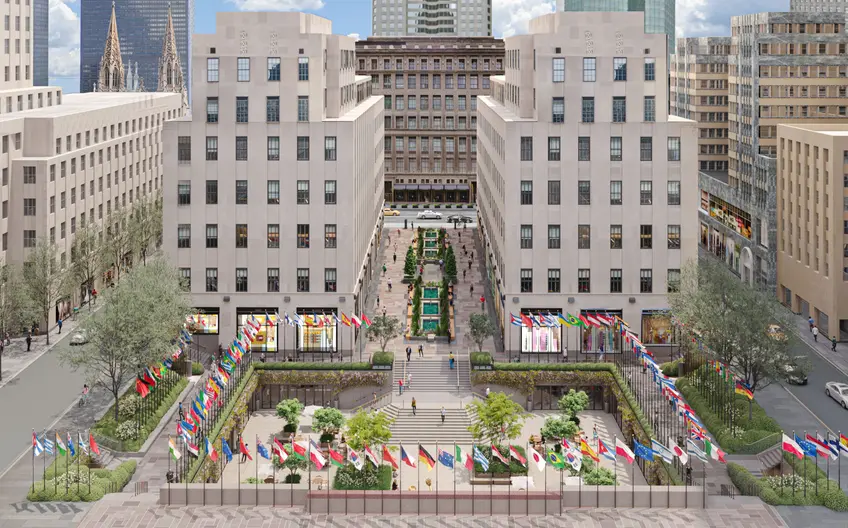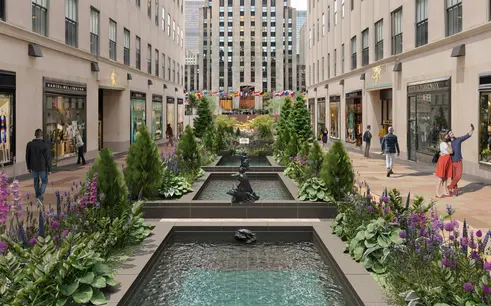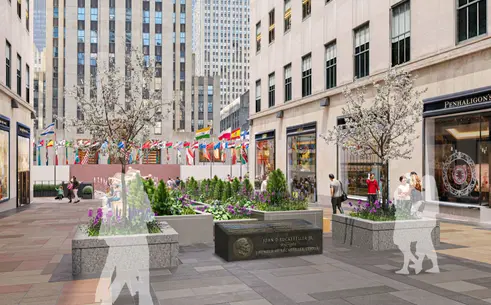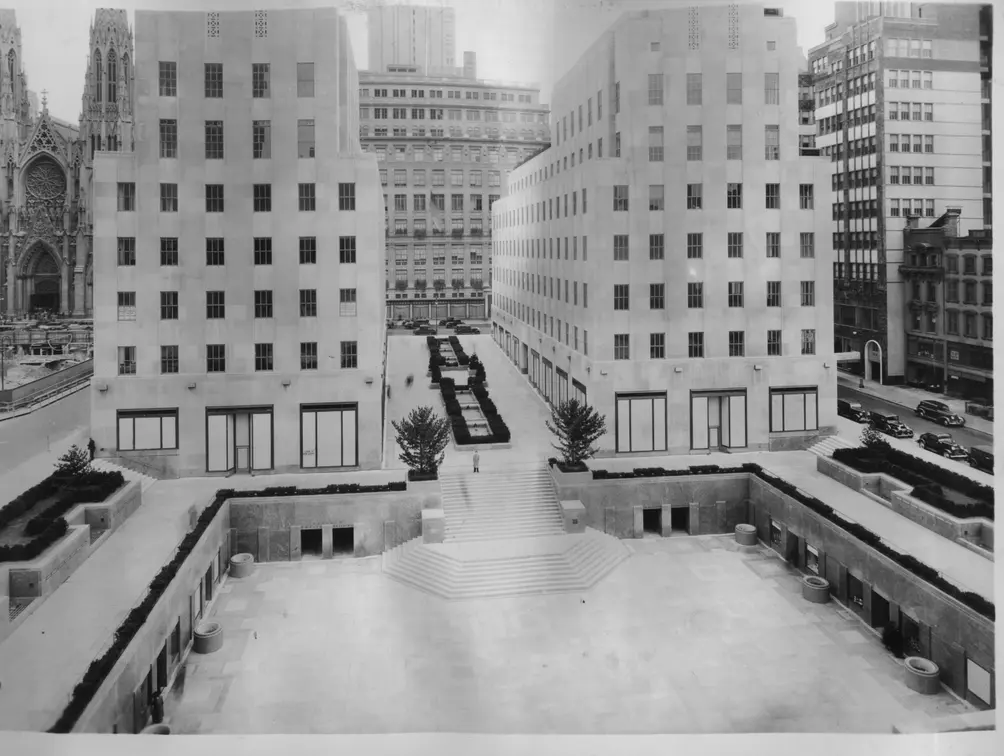 All rendering credit of Copyright 2019 Gabellini Sheppard Associates and Tishman Speyer via NYC Landmarks Preservation Commission
All rendering credit of Copyright 2019 Gabellini Sheppard Associates and Tishman Speyer via NYC Landmarks Preservation Commission
As Related-Oxford mulls erecting a 700-foot-long wall next to the High Line as part of their second phase of Hudson Yards, another billionaire-run real estate company is doing the opposite—proposing upgrades to enhance the public realm of what is among the most successful, widely-imitated master plans in the world: Rockefeller Center.
Up for design review at the Landmarks Preservation Commission is a proposal to alter several key urban design elements around its iconic sunken plaza, which currently serves as an ice skating rink during colder months and a dining piazza in the summer. While only images of the presentation can be viewed, with little in the way of descriptions, we pieced together the clues to get an idea of Tishman is proposing ahead of the hearing tomorrow.
 Proposed condition
Proposed condition
With the design firm of Gabellini Sheppard Associates at the helm⸺they were behind the interiors at 49 Chambers and 152 Elizabeth⸺one part of the plan is to replace the glass blocks under the fountains of the Channel Gardens with new ones set in clear silicone spacers to let natural light stream into reconfigured spaces below. The idea is not unlike the 'vault lights' embedded in many of the sidewalks in Tribeca and Soho. Based on the before and after shots are shown in the presentation, the change would be unnoticeable to most street-level passersby.
 Proposed new location of the monument inside the Channel Gardens
Proposed new location of the monument inside the Channel Gardens
Perhaps the most controversial item would be the relocation of a monument dedicated to Rockefeller Center's chief builder, John D. Rockefeller, and to redesign of the sunken plaza staircase located at the terminus of the Channel Gardens. The plan would move the Rockefeller's "Credo" monument from the head of the staircase to a location within the Channel Gardens. The intention appears to be to remove a pedestrian chokepoint the monument creates at the staircase.
 The Channel Gardens provide a grand procession to Rockefeller Center's sunken plaza from the east
The Channel Gardens provide a grand procession to Rockefeller Center's sunken plaza from the east
During the summer months, a new staircase design would be reminiscent of the original, Art Deco-styled historic condition, and grand enough for visitors to sit and enjoy the public space. During colder months, it appears the stairs will look generally the same as today, but removable railings and planters would substitute the existing granite parapet.
Other parts of the plan include illuminating the famous flagpoles, replacing pavers/removing bollards from fully-pedestrianized areas, adding more greenery, and removing the bulbous, glass-encased elevators that connect street level to the sunken mall below; the elevators would be replaced with contemporary glass and bronze bulkheads placed in more discreet locations at the opposite ends of the plaza.

One major change involves enlarging the glass storefronts facing the sunken plaza and completely removing the dining retail behind it. Back in August, the New York Post reported that the Rob Speyer-led firm declined to renew the lease on the plaza-encircling tenants, which include Patina’s Sea Grill, Rock Center Cafe and Cucina & Co. The Post reports that the sunken plaza-facing retail comprises 18,000 square feet of indoor space plus outdoor plaza space in the summer. The design modifications appear to be part of Tishman's multi-year plan to restore the center to its original grandeur and likely, profitability.
One glaring omission from the plan is to institute a permanent car ban on Rockefeller Center's cross streets of West 49th and 50th Streets between Fifth and Sixth Avenues. Due to extreme and often dangerous overcrowding around the center during the holiday season, the de Blasio administration hesitantly agreed to ban cars from the streets. The ban was lifted this past weekend when the Christmas tree was taken down. The Wall Street Journal reports that several government officials are pushing for the city to permanently make the streets pedestrian-only.
 NYPD could use an urban designer
NYPD could use an urban designer

 6sqft delivers the latest on real estate, architecture, and design, straight from New York City.
6sqft delivers the latest on real estate, architecture, and design, straight from New York City.
